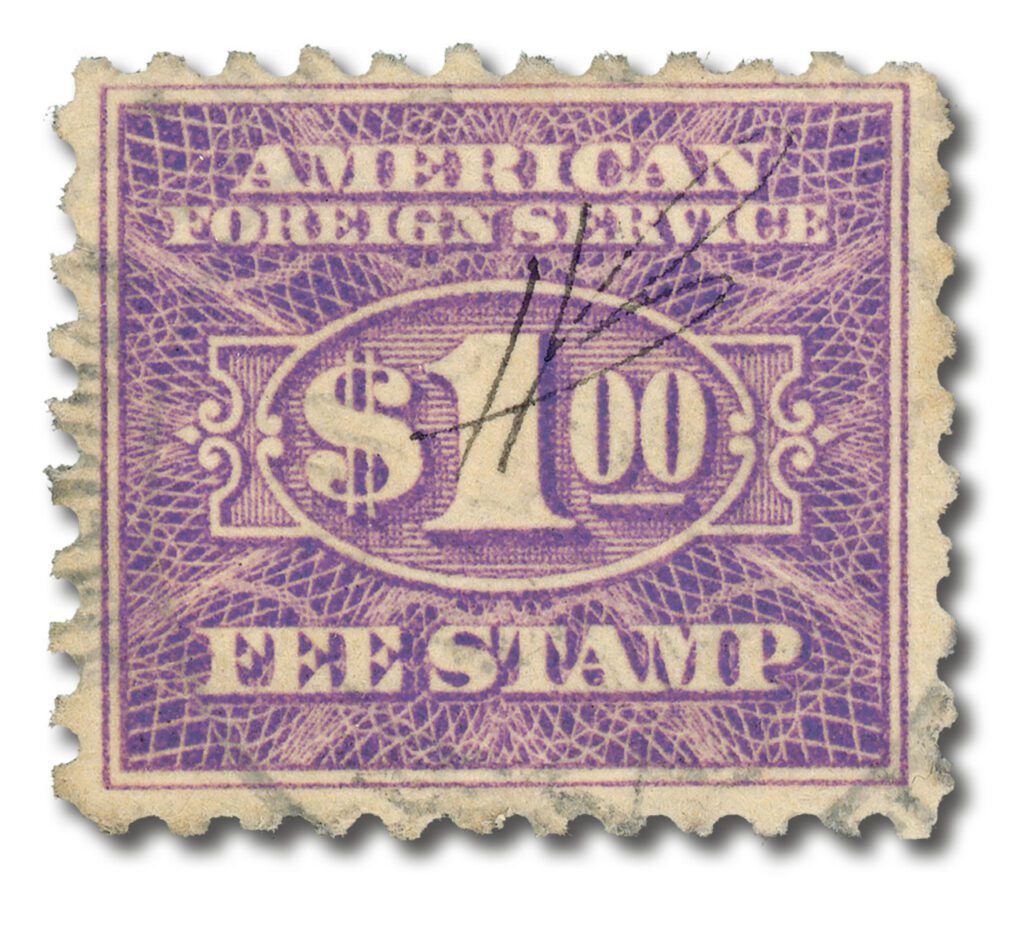On April 5, 1906, Congress passed a law calling for the creation of Consular Service Fee stamps.
That same act also provided for the reorganization of the consular service in the United States. This included classifying and grading the consuls and consuls-general, and specifying their salaries.
These stamps and changes to the consular service were in part intended to dissuade dishonesty and help keep more accurate records. They served as proof passport and visa fees were paid. American diplomats at consular offices in foreign countries used them. The stamps went into effect on June 1, 1906.
According to the act, every consular officer was to have these new stamps in several denominations to meet the various fees for passports and visas. The stamps were to be affixed to the documents to prove the fees had been paid, usually placed close to the signature or in the lower left corner.
If there wasn’t a document issued, the stamps would be attached to a receipt for the amount of the fee and canceled with pen and ink or a rubber cancel. These cancels usually had the date of the cancellation and the initials of the officer or Consular Office.
Between 1906 and 1955, there were six issues of Consular Service Fee stamps, totaling 40 stamps in all. These stamps were discontinued on September 30, 1955.
They were not supposed to be available to the public unused, but a small number have gotten into collectors’ hands. It’s interesting to consider who may have used these stamps – travelers off on exotic adventures, World War II journalists, – anything’s possible.
Click here for more Consular Service Fee stamps.
Click here to read the full text of the act.
| FREE printable This Day in History album pages Download a PDF of today’s article. Get a binder or other supplies to create your This Day in History album. |
Discover what else happened on This Day in History.





So would these fall in the philatelic Cinderella category?
These fall under Revenue Stamps.
Another interesting point is U.S. history. Thanks again, Mystic !!